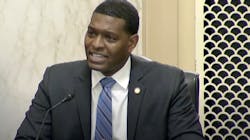EPA rule will phase out HFC emissions from refrigerated beverage and foodservice equipment
The Environmental Protection Agency recommended a rule to cut the use of gas commonly used in refrigerators and air conditioners by 85% over the next 15 years. The EPA said the proposal will would be a significant part of U.S. plans to reduce by half greenhouse gas emissions this decade.
Yesterday’s proposed EPA rule follows Congress’s passage of a law in December that authorized a 15-year phaseout of hydrofluorocarbons (HFCs). The proposal would set annual allocations for each U.S. HFC producer and importer that gradually decline over time.
HFCs are widely regard as a major driver of global warming and are being targeted around the world. President Biden has vowed to support a 2016 global agreement to reduce HFCs.
The EPA said its proposal to curb HFCs would keep the equivalent of 900 million tons of carbon dioxide emissions from reaching the atmosphere over that period, a climate impact similar to preventing the combustion of a trillion tons of coal.
“With this proposal, EPA is taking another significant step under President Biden’s ambitious agenda to address the climate crisis,” said EPA administrator Michael S. Regan. “By phasing down HFCs, which can be hundreds to thousands of times more powerful than carbon dioxide at warming the planet
“The phasedown of HFCs is also widely supported by the business community,” Regan added, “as it will help promote American leadership in innovation and manufacturing of new climate-safe products. Put simply, this action is good for our planet and our economy.”
The EPA’s proposal is the first to provide the monetized benefits from a decrease in emissions of HFCs, corresponding reductions in global warming and the avoided damages.
In April, EPA finalized a rulemaking under the Significant New Alternatives Policy (SNAP) program that listed new refrigerant options for use in retail food refrigeration, residential and light commercial air conditioning, and heat pump equipment.
These additional options have lower global warming potentials and provide additional flexibility for industry, supporting the transition to alternatives needed to meet the AIM Act’s HFC phasedown reduction steps. More information, visit https://www.epa.gov/snap.
